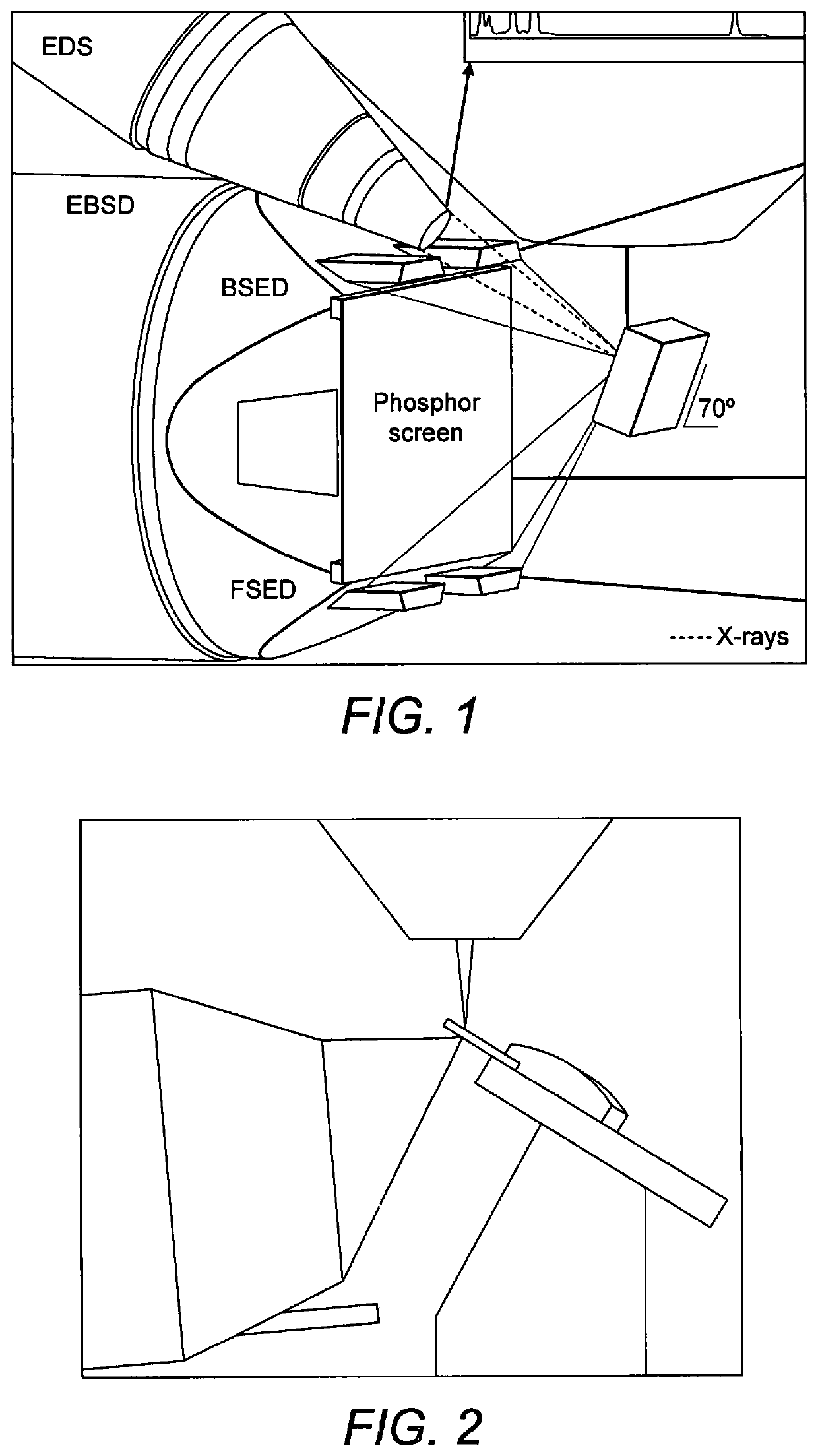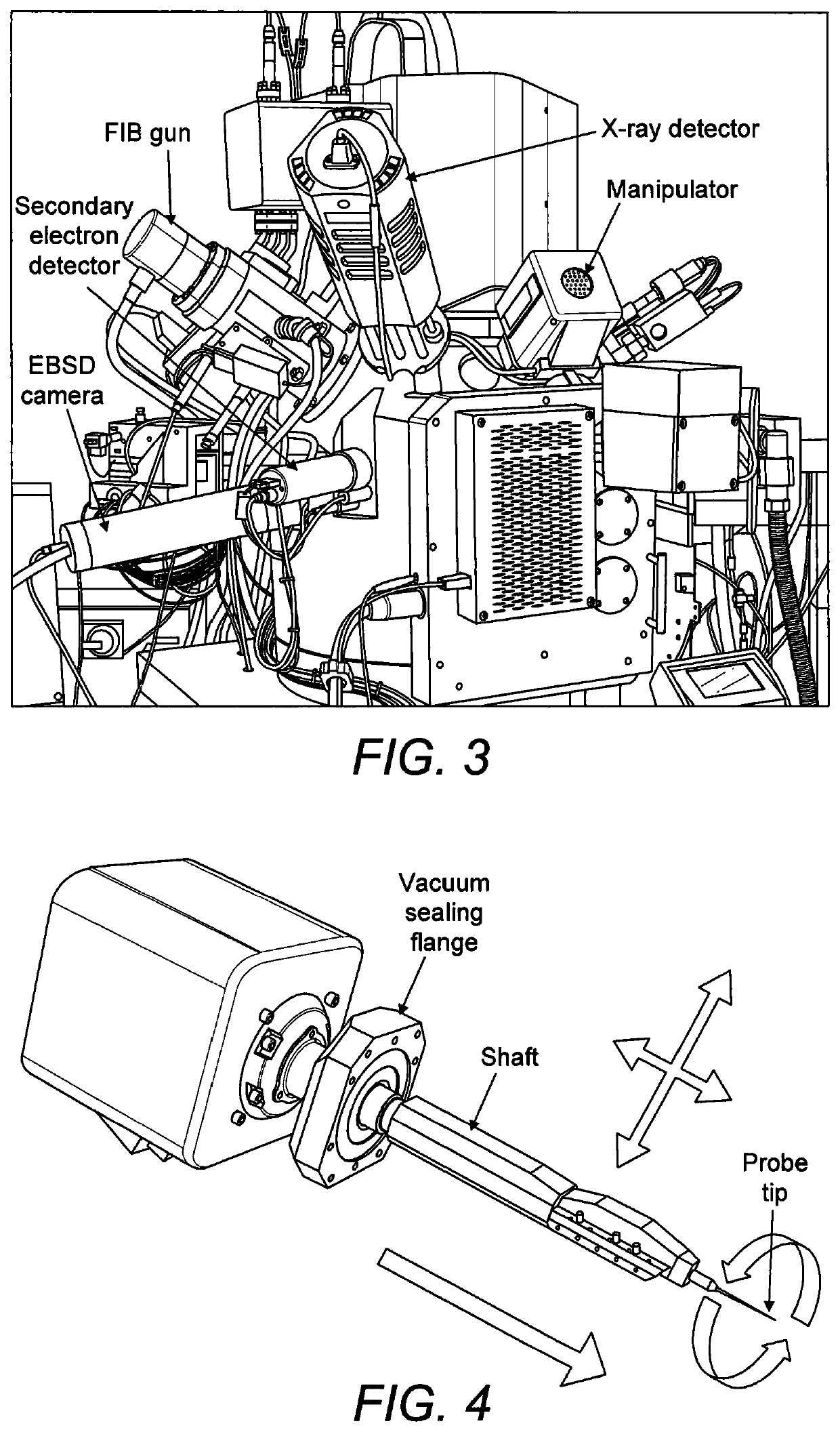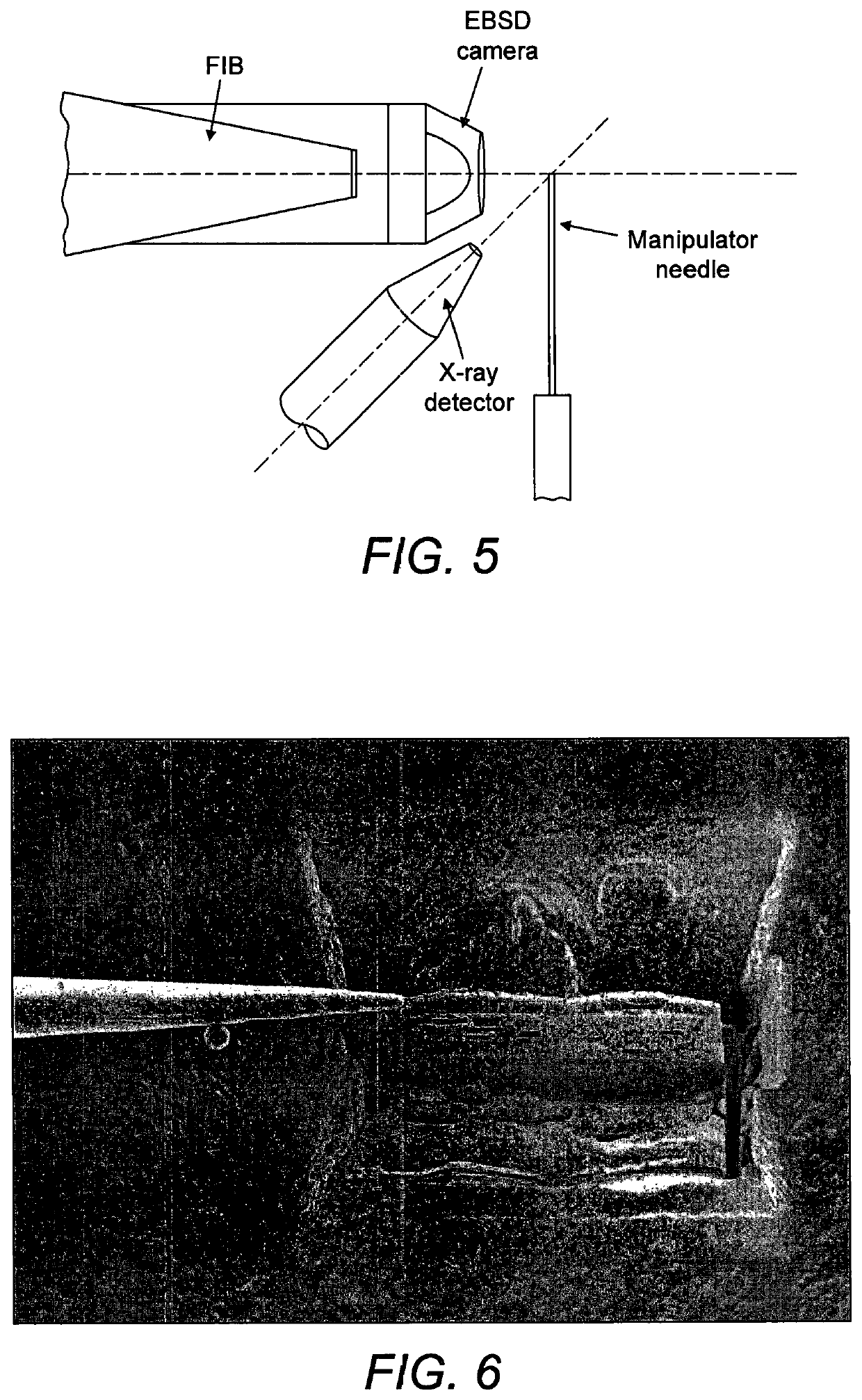Method of performing electron diffraction pattern analysis upon a sample
- Summary
- Abstract
- Description
- Claims
- Application Information
AI Technical Summary
Benefits of technology
Problems solved by technology
Method used
Image
Examples
Embodiment Construction
[0048]We now describe example methods effecting a procedure which, while in the vacuum chamber, extracts from the main specimen a small sample that contains the feature of interest and fixes it to the end of a probe that has a controllable rotation about an axis. The probe is arranged to be in a specific orientation with respect to a surface of the sample to be analysed. Thereafter electron diffraction analysis is performed on the sample held by the manipulator. Firstly we describe some practical points associated with the general method.
[0049]The initial procedure of isolation of the sample from the larger specimen is preferably achieved by milling using a focussed particle beam that could be a laser beam or a focussed ion beam (FIB). Using the “FIB lift-out” procedure, FIB milling may be used to isolate a small sample of material from the specimen, attach it to a manipulator end effector (probe) and lift it clear of the specimen. In particular, the FIB may be used to mill a trench...
PUM
| Property | Measurement | Unit |
|---|---|---|
| angle | aaaaa | aaaaa |
| thickness | aaaaa | aaaaa |
| angle | aaaaa | aaaaa |
Abstract
Description
Claims
Application Information
 Login to View More
Login to View More - R&D
- Intellectual Property
- Life Sciences
- Materials
- Tech Scout
- Unparalleled Data Quality
- Higher Quality Content
- 60% Fewer Hallucinations
Browse by: Latest US Patents, China's latest patents, Technical Efficacy Thesaurus, Application Domain, Technology Topic, Popular Technical Reports.
© 2025 PatSnap. All rights reserved.Legal|Privacy policy|Modern Slavery Act Transparency Statement|Sitemap|About US| Contact US: help@patsnap.com



